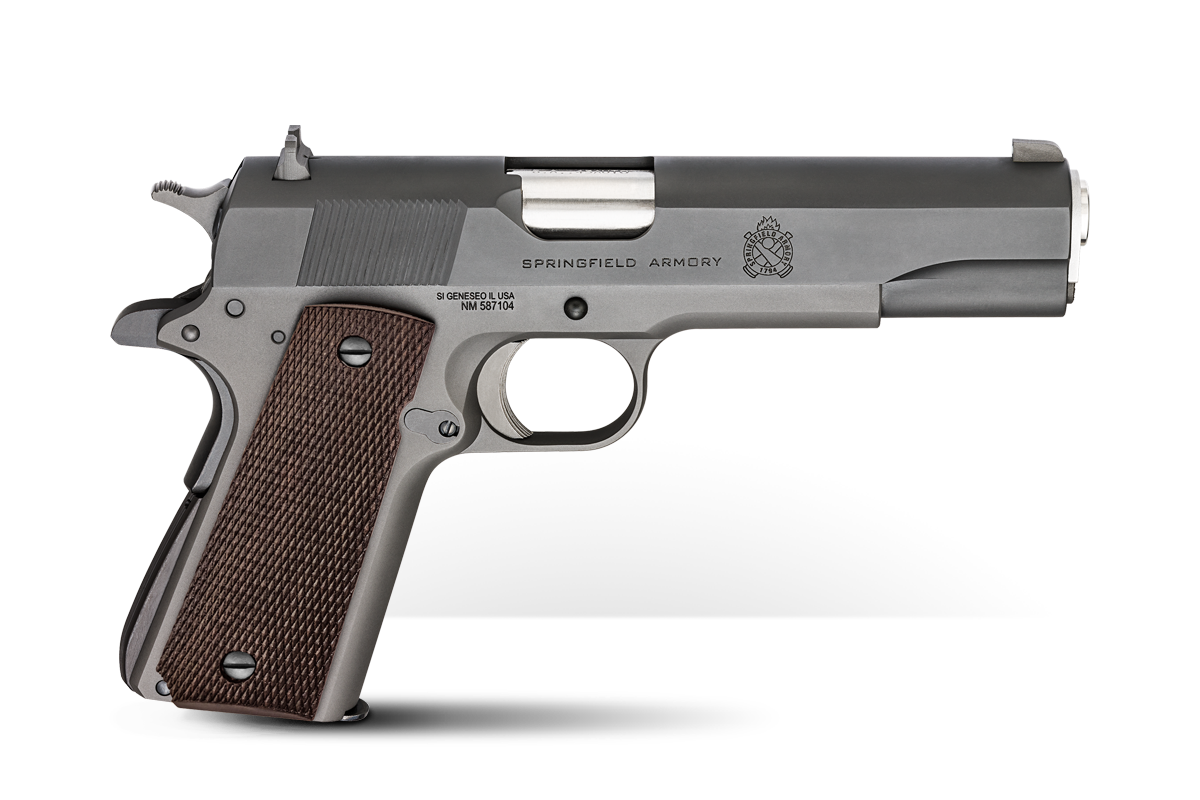Enemies: Tokarev vs. M1911
February 25th, 2020
7 minute read
In the early 1930s, Russian arms designer Fedor Tokarev was tasked with creating a pistol to replace the venerable Nagant M1895 revolver. The unattractive little sixgun had served Russian/Soviet forces since the end of the 19th century, and the Soviet Revolutionary Military Council approved Tokarev’s much more modern design for troop trials in early 1931.
The initial TT-30 was manufactured until 1936, until improvements to the production process were introduced, along with slight changes to the barrel, disconnector, trigger and frame. The next generation, the TT-33, was the primary Red Army pistol throughout the World War II years, but it did not fully replace the old Nagant revolver until after 1945.
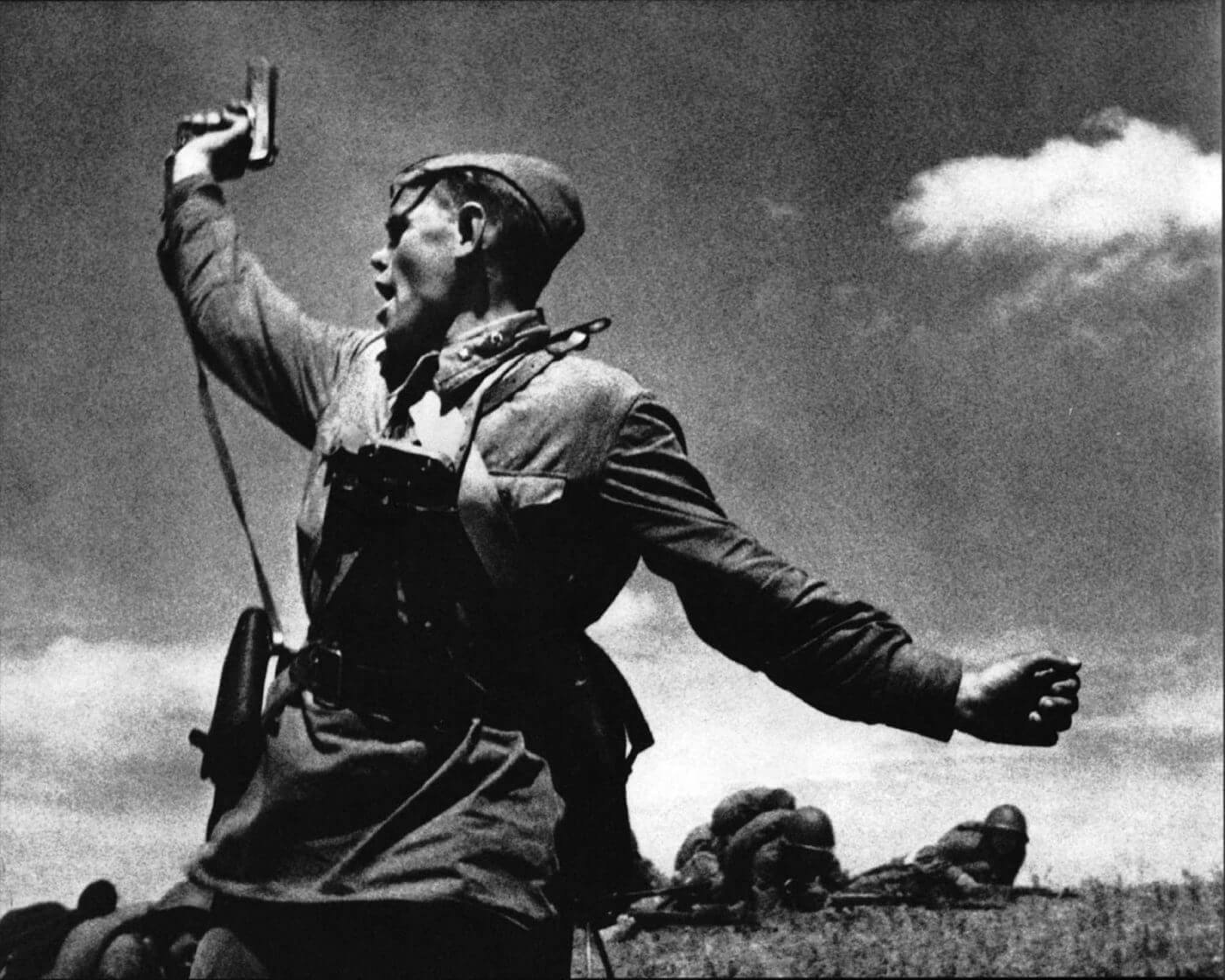
Sincerest Form of Flattery…
During the 1920s and 1930s, the fledgling Soviet Union did not concern themselves with issues like “copyright infringement” or hesitate from outright theft of intellectual property. Moscow’s agents were hard at work gathering plans and examples with which communist designers could work.
In that light, it should come as little surprise that the Tokarev pistol looks rather similar to John Moses Browning’s M1903 pistol. Internally it uses the short-recoil, barrel-tilting design of Browning’s original M1911 pistol. Simplification and production cost reduction were extremely important to the Soviets, so several alterations were made to the original design to make the Tokarev pistol easier to maintain, and also to allow a reduced number of machining steps.
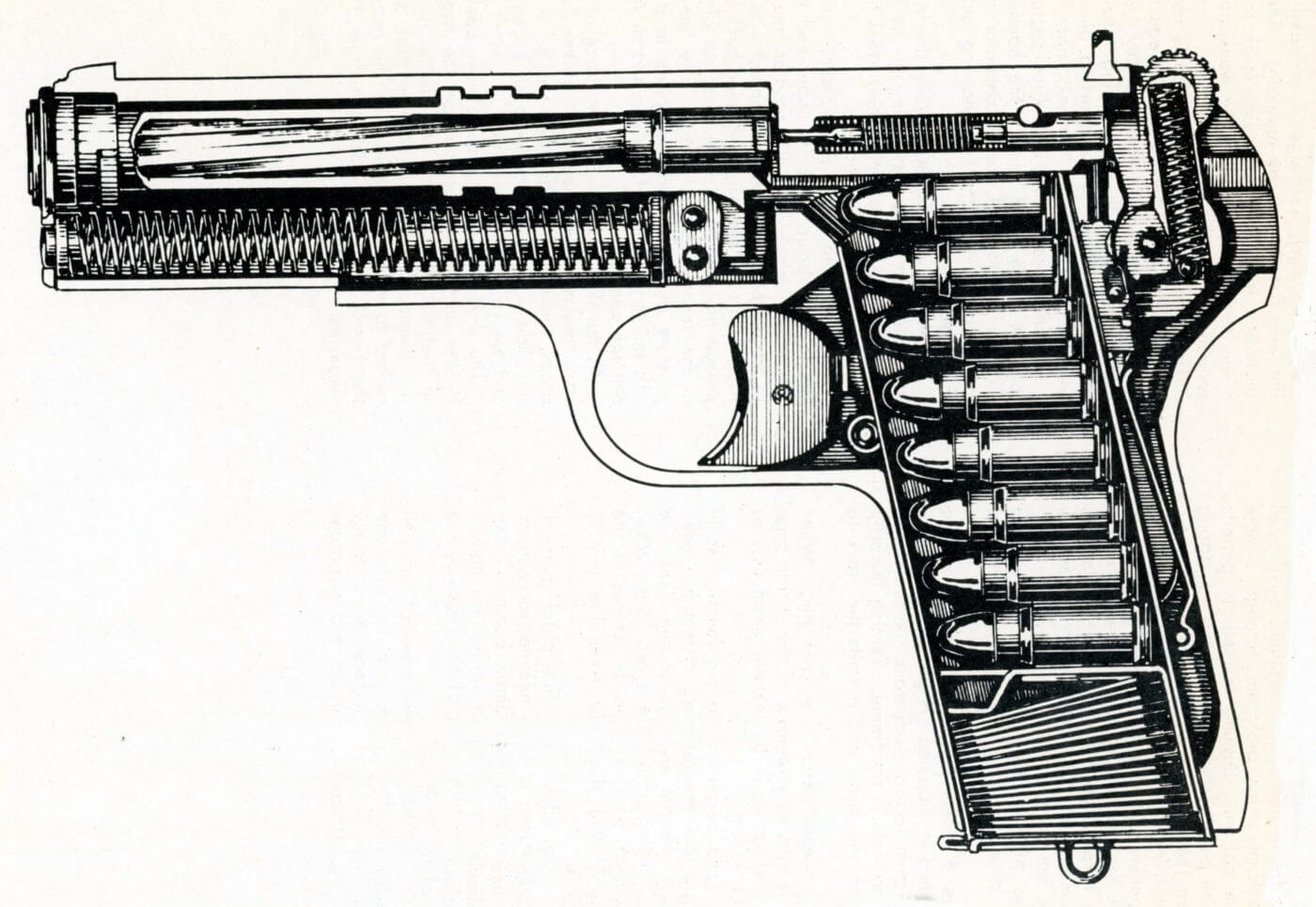
Tokarev made two distinct revisions in the design of his pistol compared to ones like the M1911. Firstly, a stronger barrel bushing was used; secondly, the hammer mechanism sub-assembly was designed to be removed from the TT-33 as a complete, modular unit. Tokarev also modified the barrel-locking system, but it retained the same function as other pistols using Browning’s system.
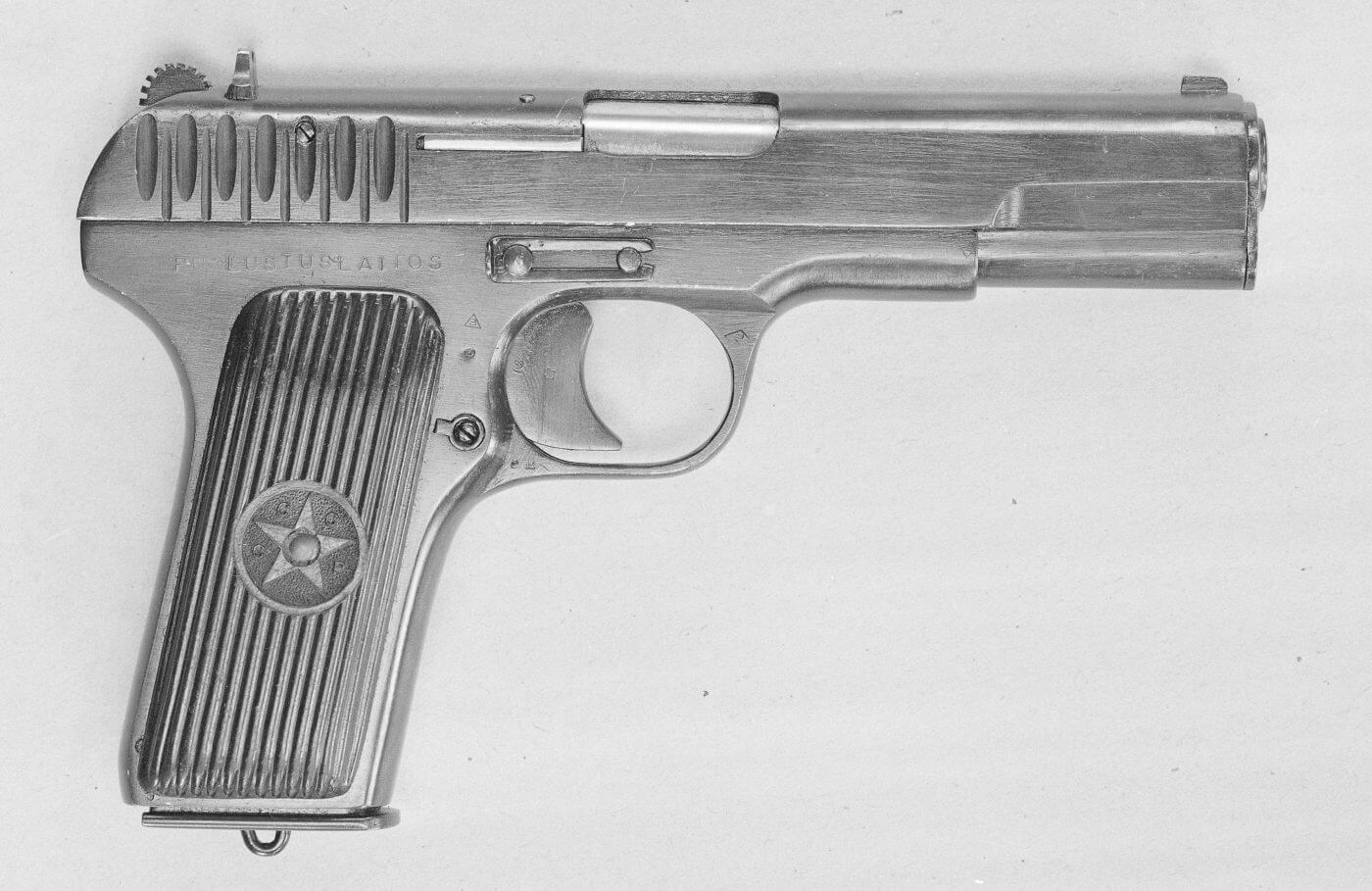
Small Pistol, Powerful Round
The Tokarev pistol used the 7.62x25mm Tokarev cartridge, which is essentially a copy of the powerful, flat-trajectory 7.63x25mm Mauser cartridge made famous in the Mauser C96 “Broomhandle” pistol. The Tokarev cartridge packed quite a bit of pep into the slim and trim pistol, with its round traveling at more than 1,400 feet per second. This cartridge would also be used in Soviet WWII-era SMGs like the PPD-40, PPSh-41, and PPS-43. The Tokarev pistol has been described as “rugged and reliable,” and no doubt this is true, although its sturdy make-up could rightly be described as more American than Russian.
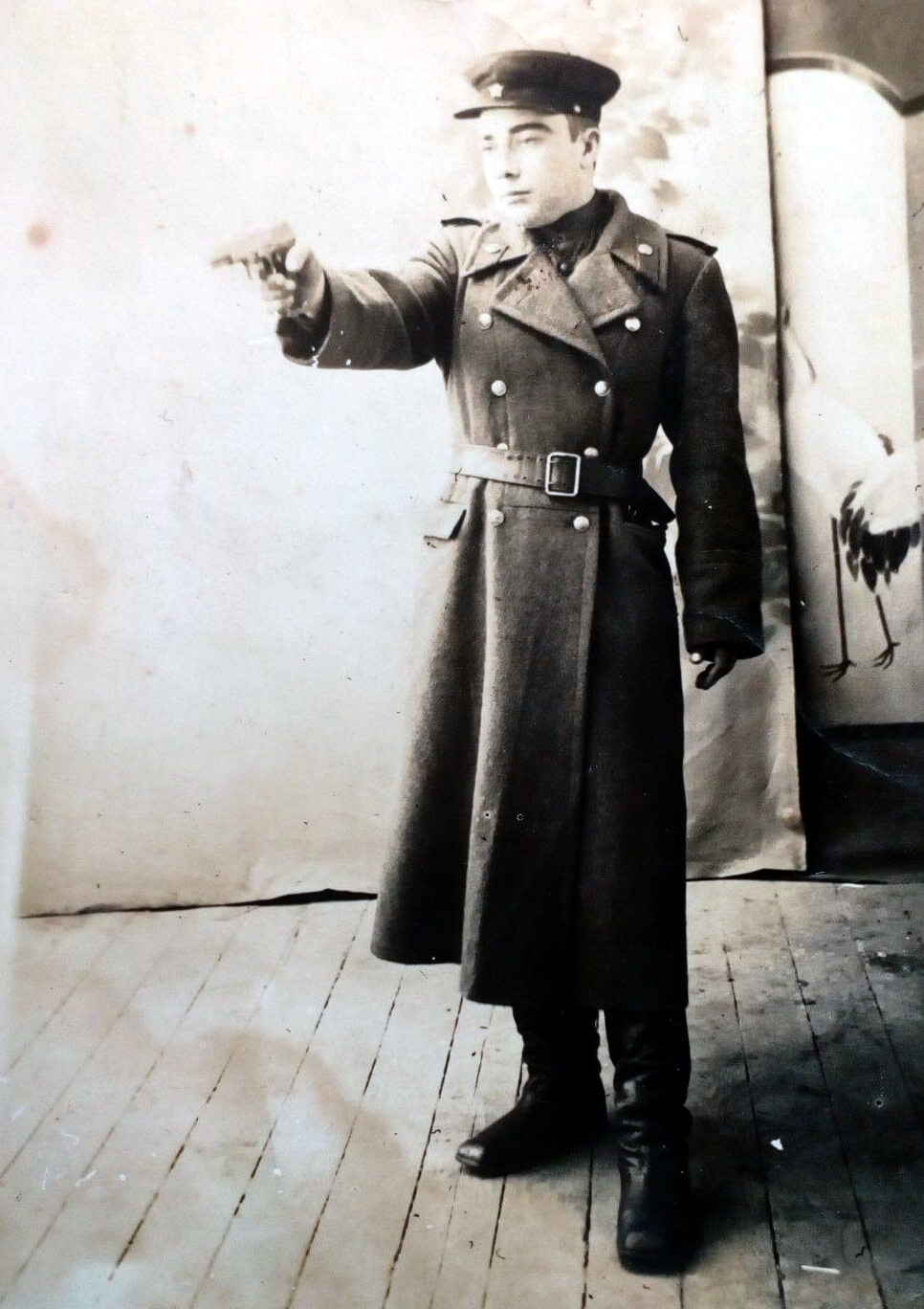
First Impressions
Even though the Tokarev pistol was not well-known in the West at the time, W.H.B Smith wrote about the Soviet TT-33 in his “Small Arms of the World” (Military Service Publishing, 1948):
“Russian Tokarev 7.62 Automatic Pistol: While the general design and the locking system were copied directly from that of John M. Browning’s invention, our service Colt .45 Automatic Pistol, the Russians simplified both manufacture and operation so much that the weapon ranks as a completely modernized version of its famous predecessor.
It costs only a fraction as much to manufacture as does the original Browning design, is much simpler to disassemble and repair, and has removed the various weaknesses of the original type.
It is a most interesting commentary that the Russians found the Browning locking system the most reliable type on which to develop their pistol.
Tokarev Pistol: Caliber 7.62mm rimless. Box type single line magazine. Capacity 8 cartridges.
Identification: Resembles Colt auto in outline but has small projecting burr hammer. When slide is removed, hammer and mainspring mechanism mounted as a sub-assembly may be lifted out of receiver.
Ammunition: 7.62mm Russian pistol. German made 7.63mm Mauser ammunition will operate perfectly in this pistol, despite the difference in caliber designation.
Ammunition listed as 7.63mm (.30) Mauser pistol made in US varies in case dimensions to a peculiar degree. Ammunition of one major manufacturer will not chamber in the Russian pistol. Ammunition of a competing manufacturer works perfectly.
Evaluation: A simplified Colt-Browning design. Machine operations were greatly reduced by this design. Its particularly good feature is that cartridge guides are machined in the receiver sub-assembly; since most pistol jams result from deformed mouths of weak magazines, this is an important item. The unique sub-assembly is also a good feature. On the debit side, the pistol has no manual or grip safety and the hammer is of poor shape for quick cocking. As to caliber, the Russians have shown a marked preference for comparatively small high velocity pistol and submachine gun loads, while the US Army pins its faith on the heavy bullet at comparatively low velocity.”
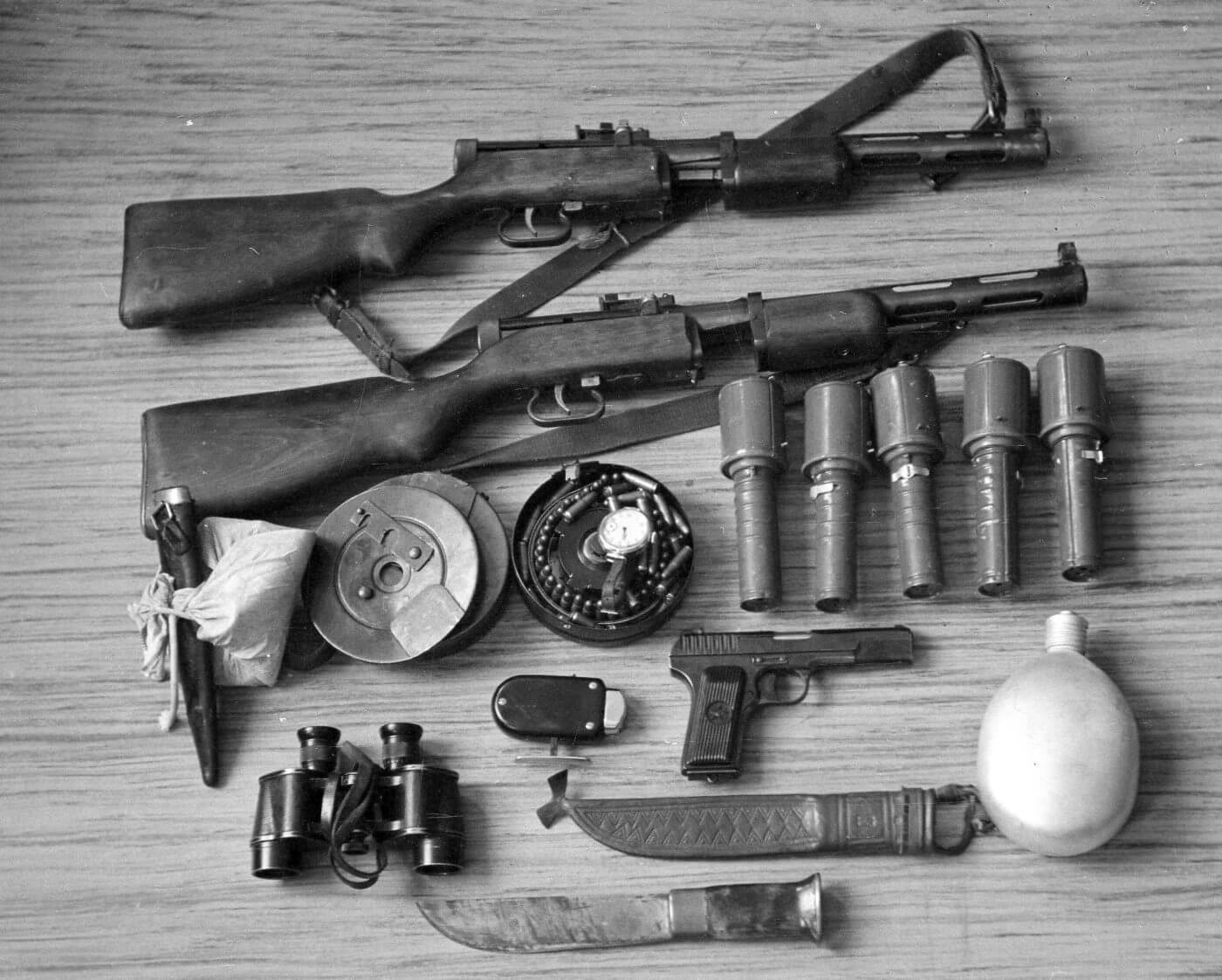
Combat Against M1911
In the course of the massive conflict on the Eastern Front in World War II, German forces captured significant numbers of the TT-33 and reissued them to their troops as the “Pistole 615(r)”. The captured Tokarev pistols fit nicely into Germany’s ammunition logistics as the German 7.63×25mm Mauser cartridge can be used in the TT-33 (however, the Soviet 7.62x25mm Tokarev cannot be used in German pistols).
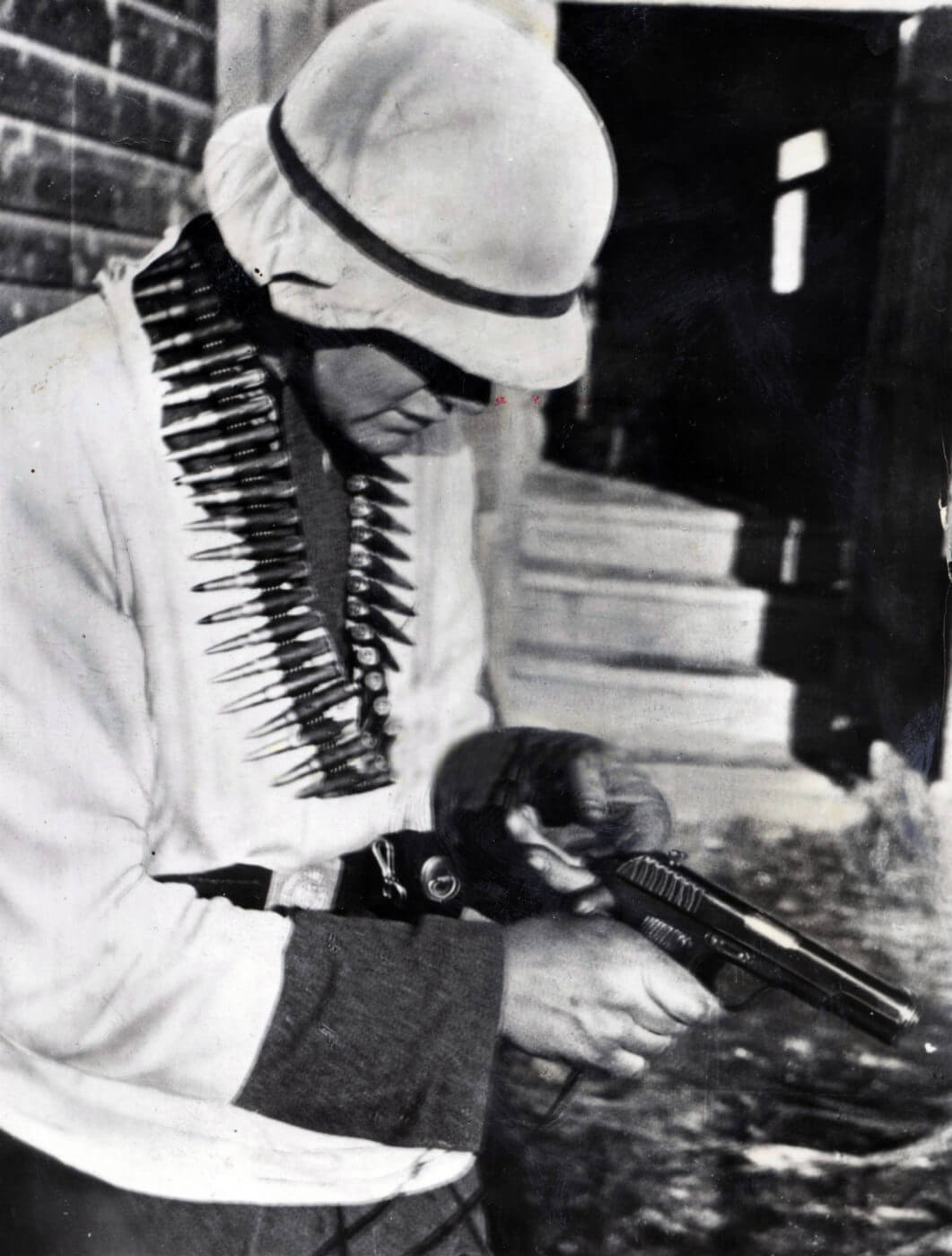
Most of the captured Tokarev pistols were issued to units on the Russian Front, but some ended up in the hands of German troops fighting against American units in the west. Accordingly, a fair number of the Tokarev pistols were captured and brought home by G.I.s — a unique war trophy that represented the global nature of World War II.
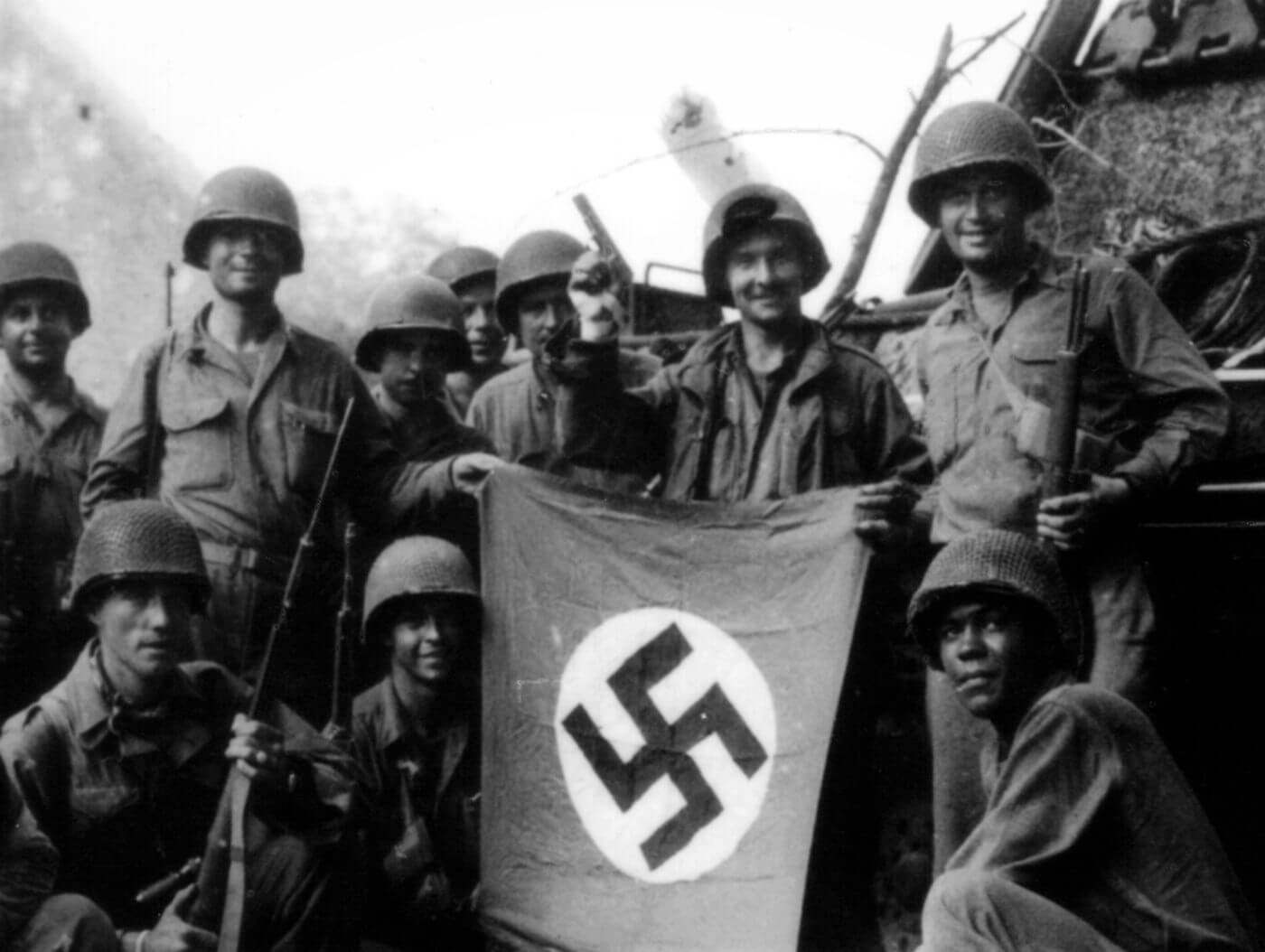
As World War II ended and the Cold War began, Americans equipped with the M1911 and their communist opponents equipped with the Tokarev would face off again in the Korean War. By the mid-1950s the Tokarev was being replaced in Red Army service by the Makarov (PM) pistol, but the TT-33 would see widespread use (and production) within the Warsaw Pact and Soviet-supplied communist nations (China and North Korea). In addition to China, the Tokarev was produced in Yugoslavia (M57), Romania (TTC), Poland (PW wz.33), North Korea (Type 68), Pakistan, Vietnam (K54), and Hungary (M48, and the Tokagypt 58 for Egypt).
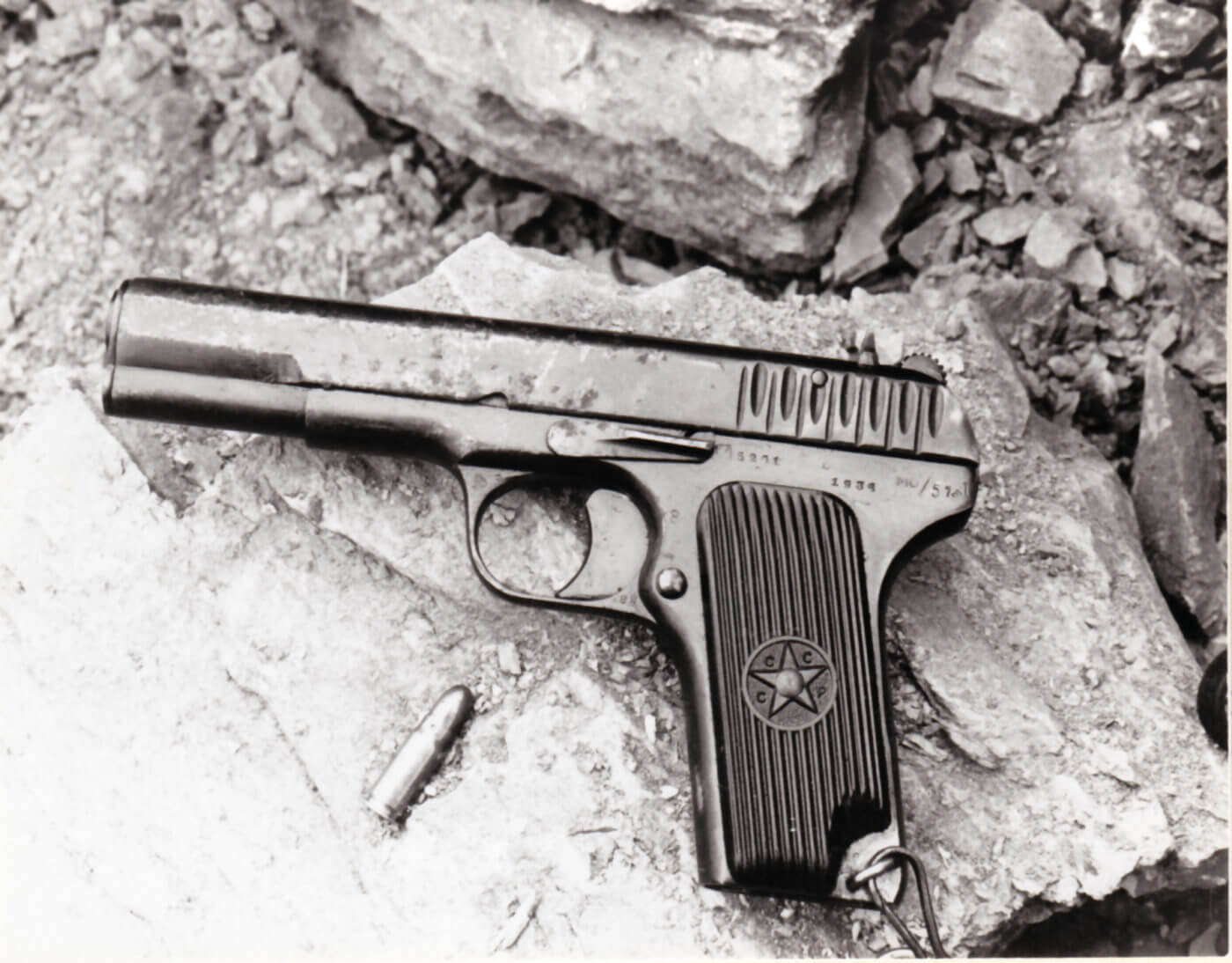
During the Vietnam War, the M1911 and the Tokarev pistol would meet on the battlefield again. Marines and G.I.s would encounter the communist pistol in the hands of Viet Cong insurgents as well as North Vietnamese regulars. A number of these pistols were the Chinese Type 54, an improved version of the earlier Type 51.
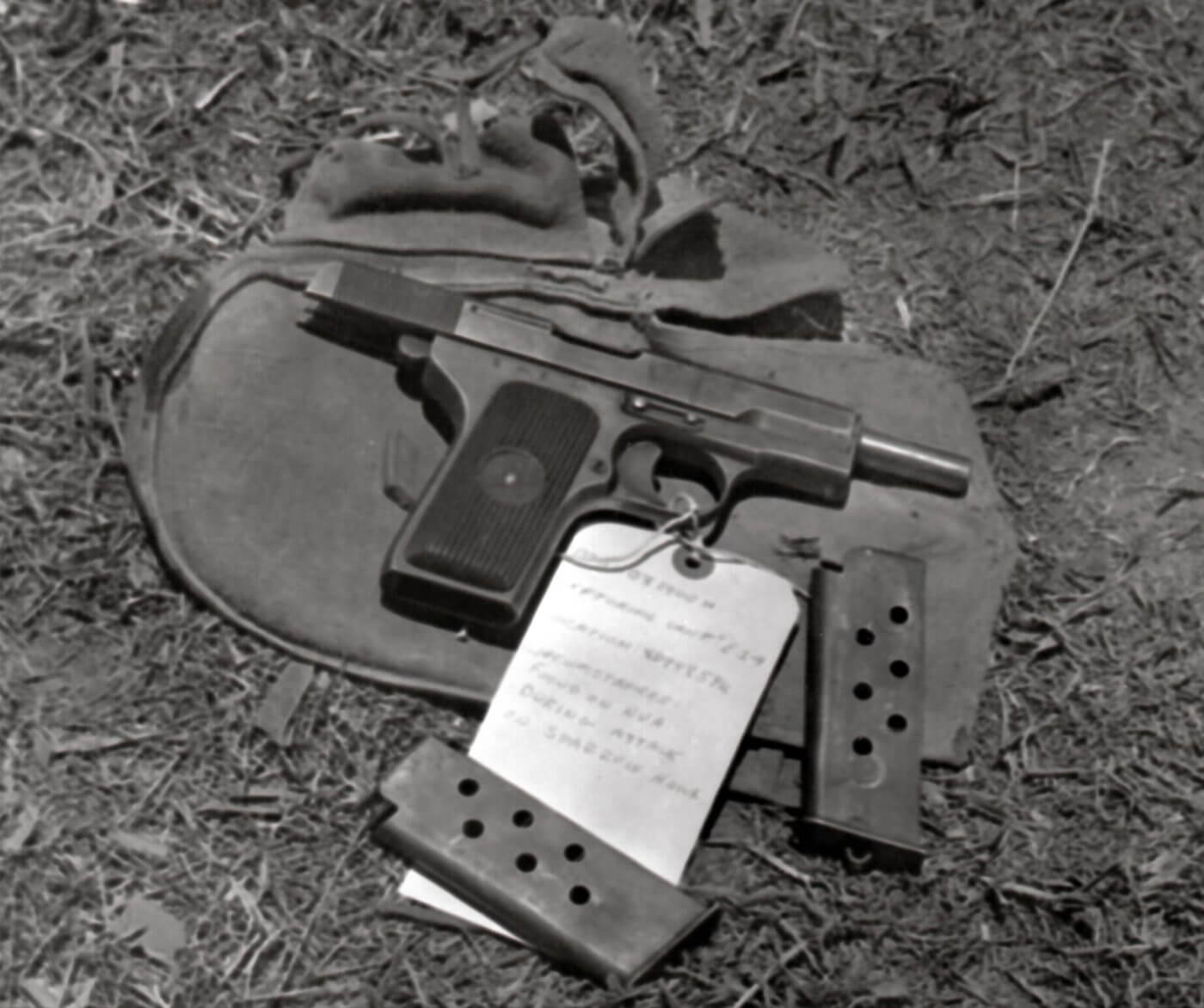
The Chinese adopted the Type 51 in 1951 and the first 250,000 pistols featured a combination of original Russian and new Chinese-made parts. In 1954, China introduced the Type 54 which exclusively used Chinese-made parts. In North Vietnamese service the Type 54 was called “K-54”.
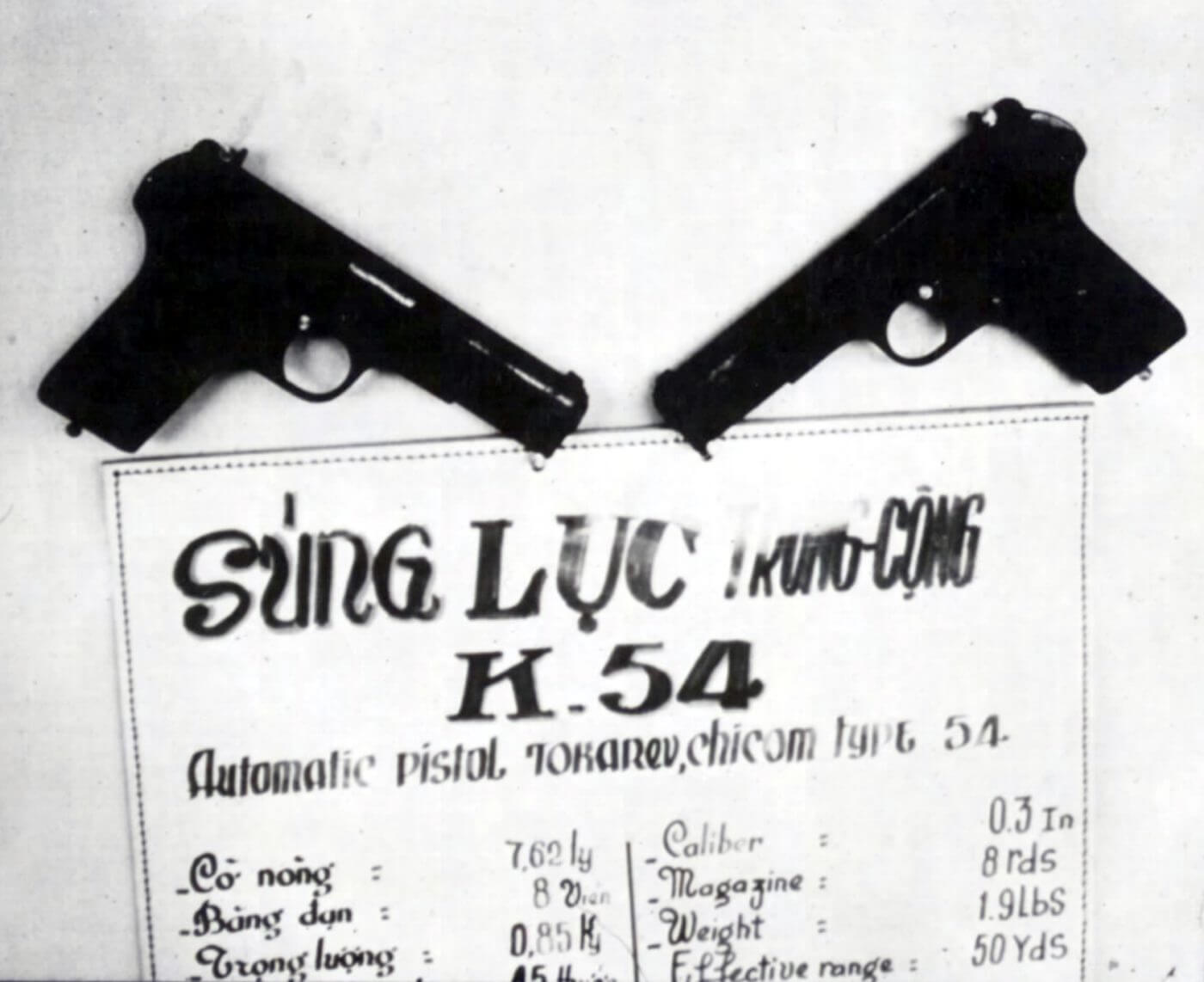
Big vs. Little Gun
The tale of the tape between the M1911 and the Tokarev quickly shows the American pistol to have much more beef. The M1911 weighs in at 39 ounces and measures 8.25 inches. The Tokarev weighs half a pound less and is .65 inches shorter.
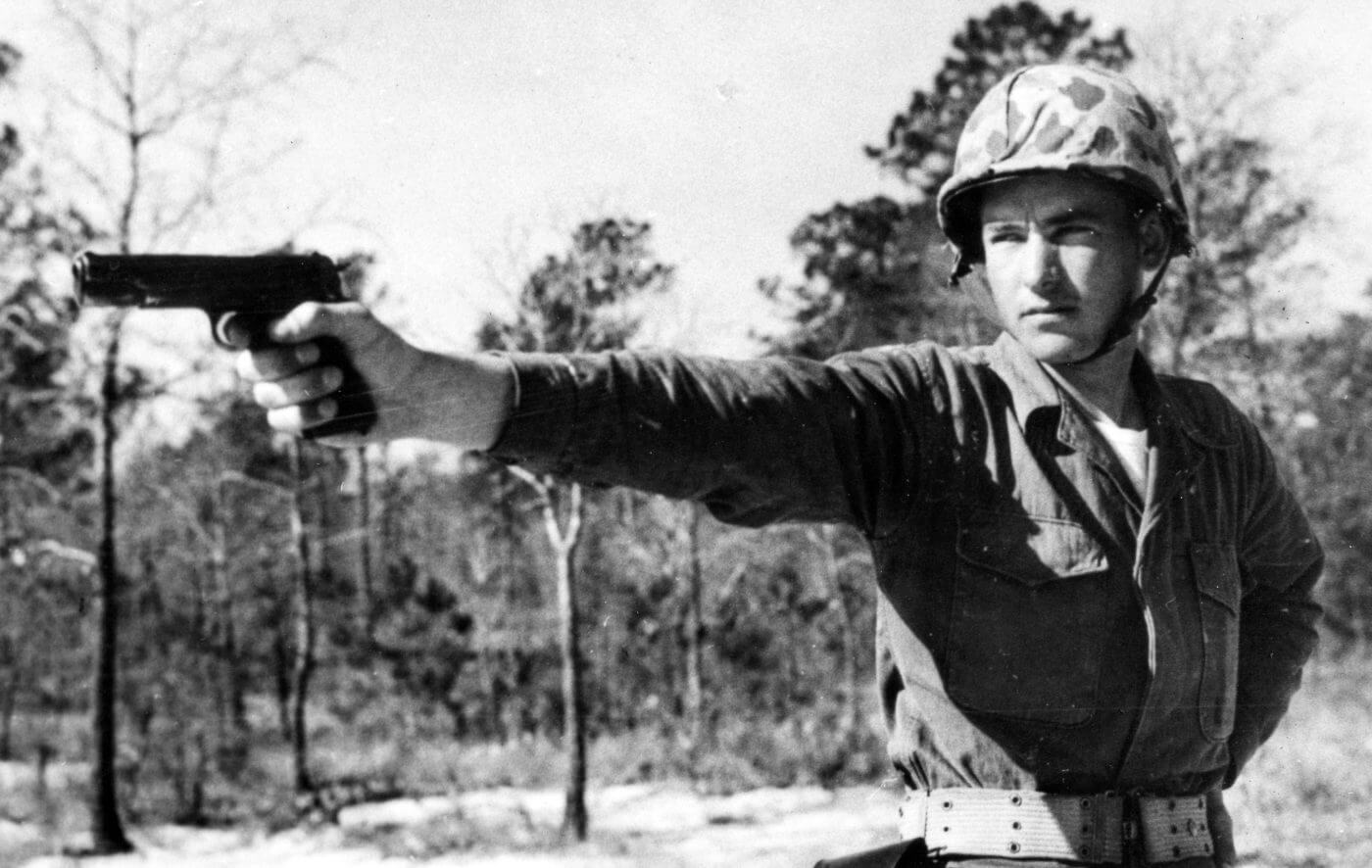
No doubt that the 7.62x25mm Tokarev round has some pep, traveling at more than 1,400 feet per second. But Americans tend to wonder what kind of stopping power that round will have when it gets to its target in such a hurry. Several generations of America’s enemies have been stopped dead in their tracks with slow but sure power of the .45 ACP.
Even so, I’ve heard few complaints about the Tokarev, and it seems to be a fine pistol — simple, unpretentious and effective. But in the close quarter arena of a handgun shootout, most American combat men give the nod to the bigger gun.
A New Classic
Put handgun history on your side with your own, brand-new 1911 courtesy of Springfield Armory’s Mil-Spec .45 ACP. It looks, handles and shoots just like the rugged government-issue M1911 that American troops carried in World War I, World War II and throughout the hot-shooting conflicts of the Cold War.
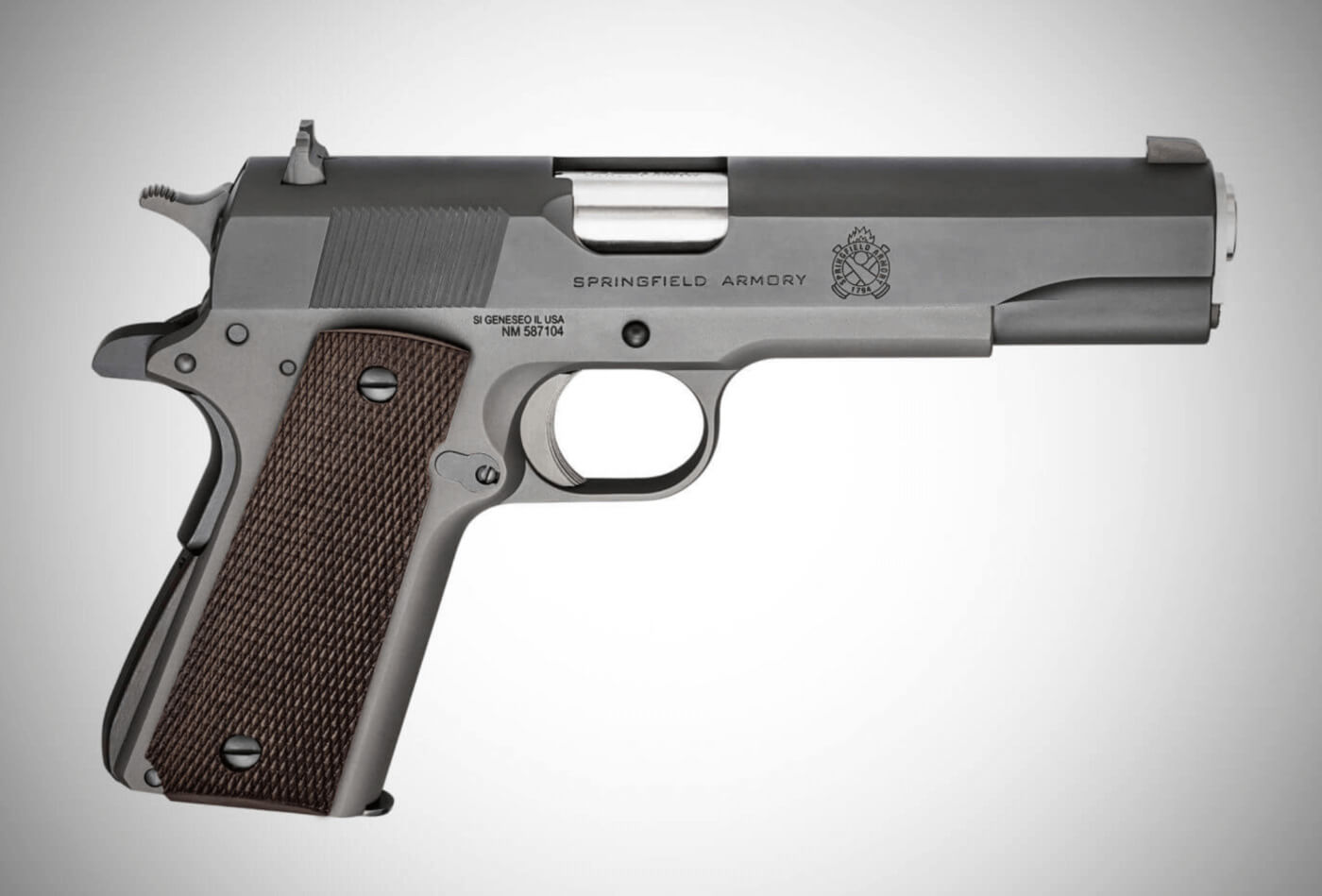
You’ll also find that Springfield has included some contemporary upgrades as well, including a stainless-steel barrel and three-dot sights. Every bit of combat-tested toughness is built into each Springfield Armory 1911 pistol.
Editor’s Note: Please be sure to check out The Armory Life Forum, where you can comment about our daily articles, as well as just talk guns and gear. Click the “Go To Forum Thread” link below to jump in!
Join the Discussion
Featured in this article
Continue Reading
Did you enjoy this article?

 154
154




